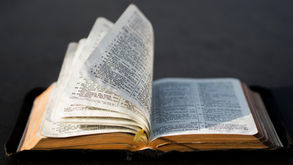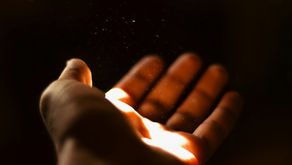Louis Gregory & Race Unity
- Uplifting Words

- Oct 14, 2021
- 3 min read

In 1912, American society practiced strict racial segregation. Blacks or “coloreds” as they were then known were second class citizens by law. In 1896 the Supreme Court (Plessy v. Ferguson) permitted enforcement of segregation wherever races comingled. Indeed, 30 of the 48 states enforced laws banning interracial marriage.
Against this backdrop ‘Abdu’l-Bahá arrived in America in April 1912, ready to dramatically demonstrate by word and deed the Bahá’í teaching of the ‘Oneness of Mankind’.
Louis George Gregory (1874-1951) was an African-American attorney born just after the emancipation of slaves. He earned a law degree from Howard University and was admitted to the bar in Washington D.C. in 1902. He became a Bahá’í in 1909 and was distinguished by being the first African-American to be invited by ‘Abdu’l-Bahá to the Holy Land for Bahá’í pilgrimage.
Almost without exception, Washington D.C. Bahá’í society in 1912 generally reflected the racial practices of society in general.
On April 23, 1912, through arrangements made by Louis Gregory, ‘Abdu’l-Bahá spoke at Howard University, a historically black college. ‘Abdu’l-Bahá began his address:
Today I am most happy, for I see here a gathering of the servants of God. I see white and black sitting together. There are no whites and blacks before God. All colors are one, and that is the color of servitude to God … the heart is important. If the heart is pure, white or black or any color makes no difference. God does not look at colors; He looks at the hearts. He whose heart is pure is better. He whose character is better is more pleasing. (Read full talk)
Following the talk, ‘Abdu’l-Bahá was the guest of honor at a reception hosted by the charge d’affaires of the Persian Legation. Prior to the the luncheon Louis Gregory had been summoned to the reception by the Master. Some of the guests present were very prominent in the social life of the Capital—all were white.
Louis Gregory was surprised at the time scheduled for a visit, as he knew of the luncheon plans, but naturally he arrived on time. Their conference seemed to go on and on – as if indeed the Master might be prolonging it deliberately.
Eventually the butler announced that luncheon was being served. ‘Abdu’l-Bahá led the way, the invited guests following closely behind. Mr Gregory was perplexed: should he leave or wait for ‘Abdu’l-Bahá to return? The guests were seated when suddenly the honoured Guest rose, looked around and then asked in English,
‘Where is My friend, Mr Gregory?’, adding ‘My friend, Mr Gregory, must lunch with Me!’
It just so happened that Louis Gregory had not been on the luncheon list, so naturally he had remained behind. Now the chargé d’affaires hastened after him. The Master rearranged the place setting at His right, the seat of honour, of course – ignoring utterly the delicate laws of protocol – and the luncheon started only after Mr Gregory had been seated. Then, in a most natural manner, as if nothing at all unusual had happened in the capital that day in 1912, with tact and humour, the Master ‘electrified the already startled guests’ by talking about the unity of mankind.

Louis Gregory and a white English Bahá’í, Louisa (Louise) A. M. Mathew were married through the encouragement of ‘Abdu’l-Bahá on September 27, 1912 in New York City.
That marriage presented many challenges. It brought all the obstacles to understanding and amity, and often cruel pressures. But it endured because the two souls it joined were ever guided and protected by a love beyond themselves and the pressures of the world. Theirs was a demonstration of the love which is prompted by the knowledge of God and reflected in the soul. They saw in each other the Beauty of God; and, clinging to this, they were sustained through out the trials, the accidental conditions of life and the changes and chances of human experience.’
Louis Gregory devoted the remainder of his life to the cause of racial amity and his promotion of the Bahá’í teachings. He is buried with his devoted wife Louisa near the Green Acre Bahá’í School in Eliot, Maine.




















